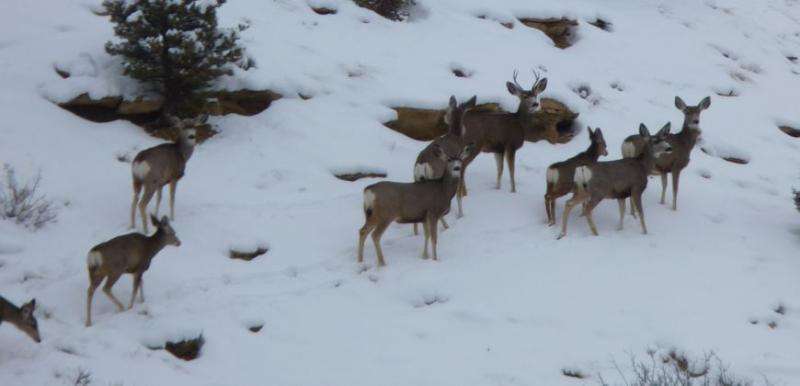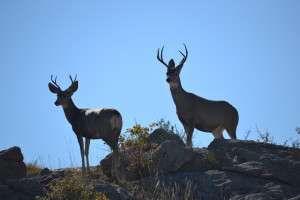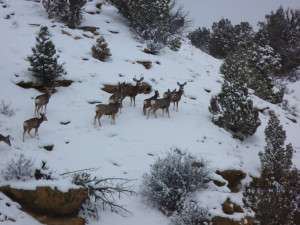A new study by Colorado State University and Colorado Parks and Wildlife found that natural gas development could be adversely impacting large areas of critical winter range for mule deer. Researchers also recommended approaches to reduce those impacts.
The rapid expansion of energy-related development into wild areas is altering landscapes and impacting mule deer and other wildlife species. Mule deer are one of western North America's most iconic wildlife species and their populations have seen unprecedented declines in recent years. The drivers of this decline remain enigmatic, with speculation that energy development could play a role, or at least inhibit their recovery.
The study used GPS tracking data collected from collared deer to quantify the impacts of natural gas development on mule deer habitat selection in the Piceance Basin of northwest Colorado. The researchers found deer had between 25 and 50 percent of their critical winter range habitat compromised by natural gas development.
Critical winter range is where deer are most heavily concentrated during the winter when deep snow restricts their movements. During this time, mule deer face severe nutritional restrictions and rely on these areas with shallow snow for access to forage.
Displacement near active wells
Wells that were being actively drilled caused the greatest response by deer, displacing them from the areas around well pads by an average of one-half mile. It is suspected that the deer's avoidance is due to high human activity, including around-the-clock light, traffic and noise during drilling. The study showed that the impacts in the Piceance Basin are actually less than in other areas of the West, where mule deer have seen much larger displacement due to natural gas development.
Maintaining undeveloped habitat
Mule deer are an iconic species in the west, but their populations have seen recent declines.
"The rugged terrain and ample vegetation cover in the Piceance Basin seems to provide refuge from some of the development impacts documented elsewhere," said Joe Northrup, the study's lead author and postdoctoral fellow in CSU's Department of Fish, Wildlife and Conservation Biology. "Maintaining undeveloped habitat amidst development can allow species to avoid development activities, reducing the influence of those activities."
Quantifying the distance at which energy developments impact wildlife is a critical step to reduce oil and gas industry impacts on wildlife. This information is useful to guide development plans aimed at reducing impacts and to quantify the habitat lost for implementing mitigation plans and related guidelines and regulations.
Potential solutions
Mule deer rely on areas without deep snow during the winter for finding food and being able to move freely.
"A number of potential solutions exist for reducing impacts of energy development on wildlife," said Chuck Anderson, mammals research section leader for Colorado Parks and Wildlife and study author. "Avoiding drilling during critical time periods for sensitive species is an obvious first step, but solid spatial planning to ensure the maintenance of refuge habitat for wildlife is critical. This may be done by reducing the zone of impact through concentrating development activity, constructing noise and light reducing barriers around drill rigs in critical habitat, and taking measures to reduce traffic."
More information: "Quantifying spatial habitat loss from hydrocarbon development through assessing habitat selection patterns of mule deer." Global Change Biology. doi: 10.1111/gcb.13037
Journal information: Global Change Biology
Provided by Colorado State University






















